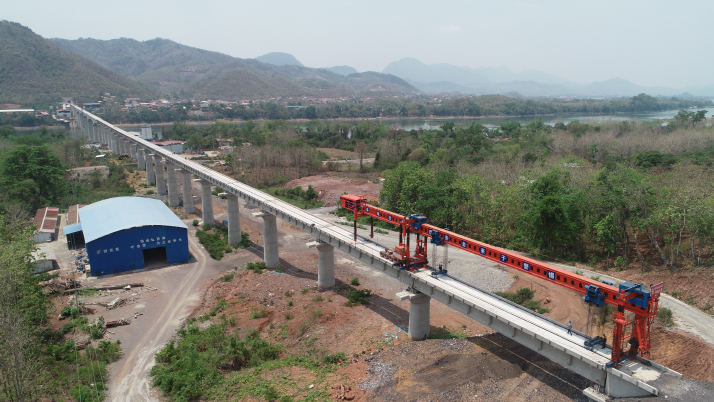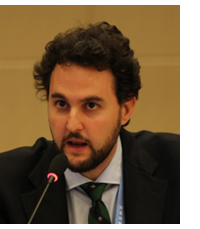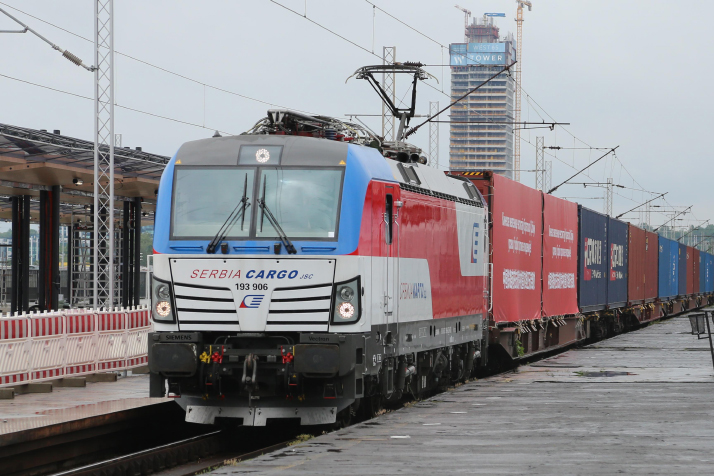| Opinion |
| Broader Belt and Road cooperation will unfold after pandemic blows over | |
|
|
 The Luang Prabang cross-Mekong River super major bridge along the China-Laos Railway in Laos under construction on April 23 (XINHUA)
 The impact of the novel coronavirus disease (COVID-19) on the world economy is yet to be assessed. Estimations are particularly difficult because plans are being continuously reconsidered and priorities require adjustments. Life in some countries has returned to normalcy but concerns about a second wave and the psychological fear of citizens to go back to their 2019 daily routine remain natural obstacles. One of the critical questions is how the big economic shock caused by COVID-19 will be overcome in the future. It is here that the Belt and Road Initiative deserves special attention. Until the COVID-19 outbreak, the initiative, consisting of the Silk Road Economic Belt and the 21st-Century Maritime Silk Road, had emerged as the most successful integration platform for years on the world stage, guaranteeing common prosperity and win-win results. . This does not mean that problems did not occur. At the Second Belt and Road Forum for International Cooperation in April 2019, Chinese President Xi Jinping placed emphasis on issues such as debt sustainability and protection of the environment. China has sought to solve problems to safeguard the smooth continuation of the initiative. Quality first The pandemic temporarily interrupted the advancement of the Belt and Road Initiative. Workers on infrastructure projects could not easily access sites over public health concerns. Transportation networks have been seriously affected not only in China but also in other participating countries to stop the contagion. International demand for Chinese products dropped as a result of lockdown measures with the exception of necessary medical equipment. The economic pain of the novel coronavirus has made it more complicated for recipients of loans by Chinese banks to normally serve them for some period of time. Obviously, this is the case for the serving of all loans irrespective of their source. Western airline companies, for instance, needed state support in order to economically survive. Under the extreme circumstances of the pandemic, the financing of new Belt and Road projects could not magically stay unaffected. In response to challenges from COVID-19, China has improved its policies for Belt and Road cooperation. In his Report on the Work of the Government delivered at this year's legislative session in May, Premier Li Keqiang reaffirmed the commitment to achieve shared growth through consultation and collaboration as well as by upholding market principles and international rules. The new normal of the national economy is based on the realization that quality is much more significant than quantity in the long-term for sustainable development. From the moment this happens domestically, it can also happen internationally as long as Belt and Road cooperation is advanced. China does not overlook the new debt dynamics. It recently announced the suspension of debt repayment for 77 developing countries and regions. It has thus contributed to the Group of 20 debt relief mechanism for low-income partners. Song Wei, a research fellow at the Chinese Academy of International Trade and Economic Cooperation, the Ministry of Commerce, said China would not force repayments, referring to the eight principles governing China's economic and technical assistance to other countries issued in 1964. Debt issues will be addressed with tailored plans based on discussions between the creditor and the receiver. Though this is not always simple, it can prove to be an efficient method.  A China-Europe freight train carrying medical equipment arrives in Belgrade, Serbia, on May 26 (XINHUA)
Promising prospects Some Belt and Road infrastructure projects have already resumed work. Construction of bridges for the Jakarta-Bandung High Speed Railway in Indonesia and laying tracks for the China-Laos Railway are some examples. While safety measures are being taken, the progress is currently slower in comparison to the pre-COVID-19 phase. The return to 2019 standards will be a gradual process. What now matters is that the Belt and Road Initiative appears as a safe and successfully tested growth engine for countries interested in taking part in it. It can give the world economy what might be described in the 21st century as Keynesianism with Chinese characteristics. In the final account, the vision requires patience. In 2019, for example, the Port of Piraeus in Greece became the top port in the Mediterranean. This success is not a flash in the pan. On the contrary, it is the product of 12 years of careful investments by its Chinese operator COSCO that are still continuing and expanding. It is easy to criticize Chinese investments but difficult to replace them with another source of financing. This is the most important advantage of the Belt and Road Initiative. Last but not least, the discussion about the Belt and Road Initiative should not revolve only around infrastructure projects. The initiative aims at fostering international cooperation in several sectors. Tourism and people-to-people exchanges have suffered a serious blow due to the pandemic. Nevertheless, there are other sectors which have the potential of contributing to interconnectivity. The first is the digital side of the initiative which has been elevated to new heights in the lockdown period. E-commerce and cloud computing have been widely used by the international community. China is not only the world leader in 5G technology but has already started research on the development of 6G. The second is the Health Silk Road. An idea proposed by Xi in 2016, it has seen China provide medical assistance to numerous countries, principally in Africa. China also plans to make its home-developed COVID-19 vaccine a global public good when it is ready. A recent global survey conducted by the Alliance of Democracies, a non-profit, indicates that over 60 percent of the respondents believed China's response to COVID-19 has been good, whereas only a third held this view about the U.S. The Chinese Government is working hard and the results of its policies are appreciated by the world public opinion. This is also the case with the Belt and Road Initiative. Critics of China have been vocal in anticipating a failure because of the initial disruption as the virus took everyone by surprise. A careful study of Chinese history suggests that China becomes stronger and more united when challenges arise. Policy commitments are not forgotten and yield results in the long run. (Printed Edition Title: A Better Tomorrow) Comments to yanwei@bjreview.com The author is director of the EU-China Program at the Centre International de Formation Européenne |
|
||||||||||||||||||||||||||||||
|
